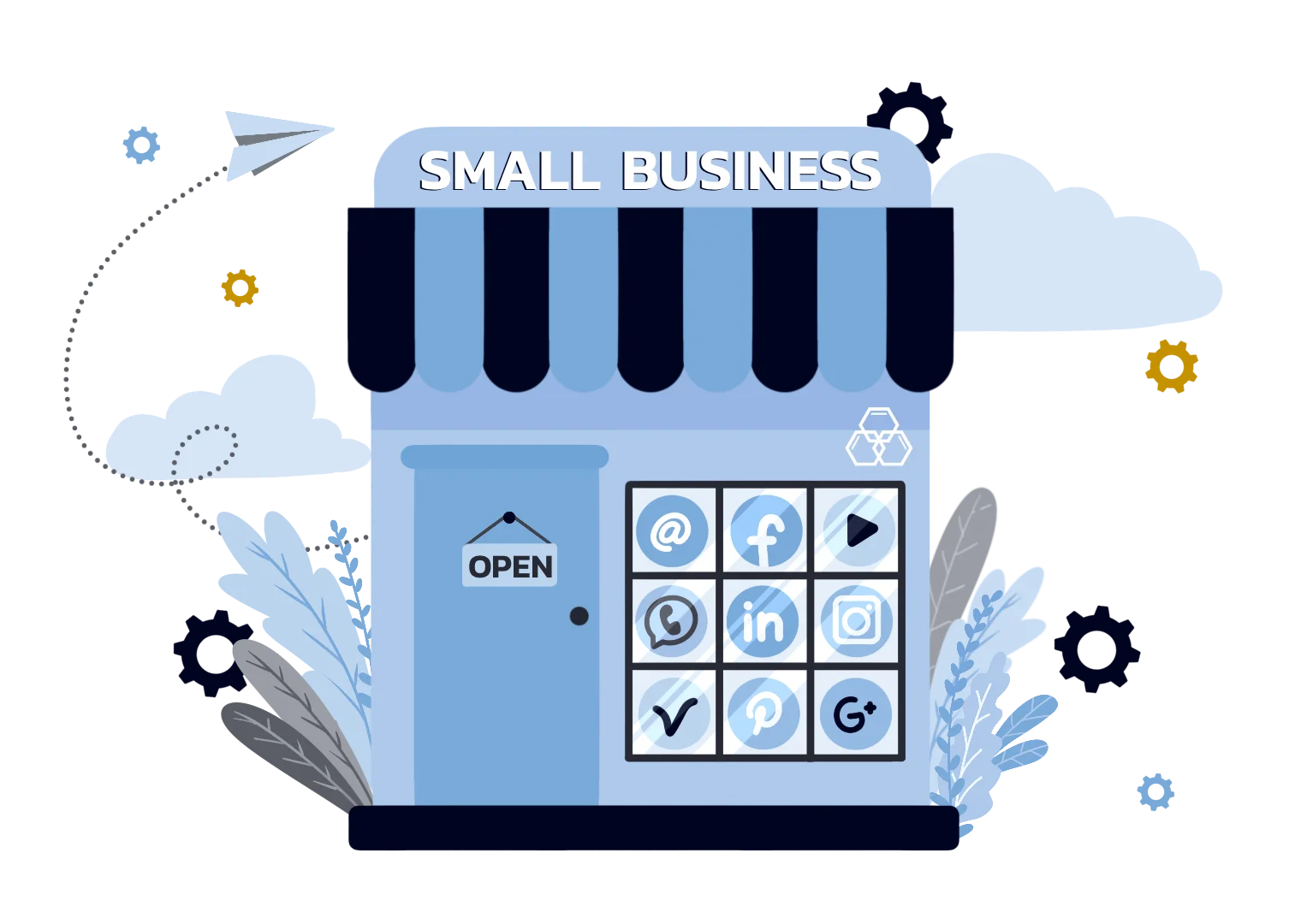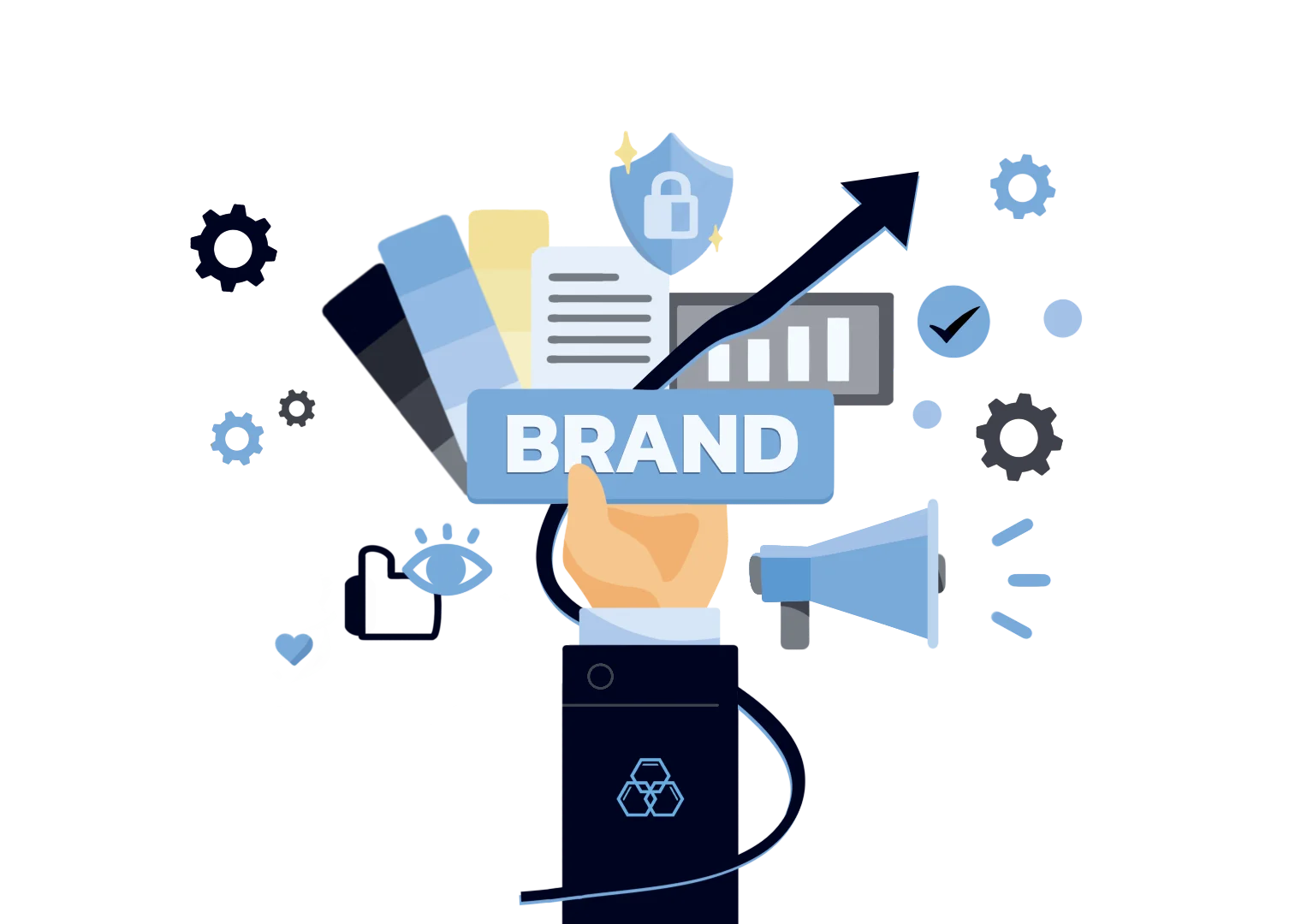Are you overwhelmed by competing against brands with larger budgets and more resources? Is it difficult to stand out among the endless competitors that exist in today's cluttered marketplace? We get it; competition is fierce. This is where the concept of a niche differentiation strategy comes in.
With a well-executed niche differentiation strategy, you'll be able to break away from being lost among the “sea of sameness” and instead carve out an impactful presence for your brand that resonates with potential customers. Read on to learn how this approach could help your business in both short-term and long-term success!
What Is a Niche Differentiation Strategy?
A niche differentiation strategy is a marketing approach focused on serving a specific market segment with unique needs and preferences. By targeting a smaller, more specific group of customers, companies can tailor their products and services to meet those customers' specific needs and therefore have a better chance of standing out in a crowded marketplace.

For example, a company that sells furniture may specialize in modern furniture for micro-spaces, truly focusing on multi-use designs. By narrowing their focus to this particular segment of the market, they can better understand the needs and preferences of their target customers and create products that meet those specific needs. They may also be able to offer unique features or high-end services that their competitors don't, such as custom sizing or innovative designs.
Why use a niche differentiation strategy?
Startup companies often rely on targeting a narrow focus with particular pain points and desires because of the following reasons:
- Their market competition is already tight and the dominant competitors already serve a wider range of customer profiles.
- There is still a sufficiently large customer segment that has an unfulfilled need thus guaranteeing ROI and growth.
- If there are many customer segments in which the company can choose which is the most productive when catered to.
- If the company has particular expertise, experience, and resources to target such a niche.
However, while niche differentiation strategy is attractive as the narrower focus benefits marketing costs and efforts, it also has its drawbacks:
- A targeted approach to a particular niche might cause the organization to miss out on business opportunities in other customer segments
- Scaling the business will be a challenge as it stands on a narrow foundation.
- There is a high risk in targeting a niche as it heavily relies on customer preferences and market conditions, which might make unforeseen changes.
Managing the balance between growth and a focused approach requires constant effort and might take away time needed for the internal development of the organization. This is why successful companies often delegate this to branding experts as marketing for a particular niche requires expertise and understanding of the challenges in designing a niche differentiation strategies.
Quick over view of the top 10 brand differentiation strategies
Pricing Differentiation:
- Educational Description: Adjust pricing strategies to position the brand as either a cost leader (offering lower prices) or a premium provider (offering higher prices with added value).
- Real-world Example: Walmart (cost leader) vs. Apple (premium provider).
Product/Service Offer Differentiation:
- Educational Description: Develop unique features, variations, or bundles that stand out in the market.
- Real-world Example: Starbucks' diverse coffee and drink menu with customizable options.
Content Differentiation:
- Educational Description: Create and share valuable, relevant content that showcases expertise and addresses customer pain points.
- Real-world Example: HubSpot's Inbound Marketing blog offering educational content for marketers.
Speed and Convenience Differentiation:
- Educational Description: Focus on reducing wait times, streamlining processes, and enhancing customer convenience.
- Real-world Example: Amazon Prime's two-day shipping guarantee for members.
Quality and Innovation Differentiation:
- Educational Description: Invest in research and development to continuously improve products/services.
- Real-world Example: Tesla's innovative electric vehicles with cutting-edge technology.
Customer Service Differentiation:
- Educational Description: Provide exceptional customer service through personalized interactions and quick issue resolution.
- Real-world Example: Zappos' legendary customer service with a 365-day return policy.
Sustainability and Social Responsibility Differentiation:
- Educational Description: Commit to eco-friendly practices and engage in socially responsible initiatives.
- Real-world Example: Patagonia's dedication to sustainability and environmental activism.
Brand Personality and Story Differentiation:
- Educational Description: Develop a unique brand personality and narrative that resonates with customers.
- Real-world Example: Apple's sleek and minimalist design philosophy and "Think Different" campaign.
Distribution Channel Differentiation:
- Educational Description: Choose unconventional distribution channels or partnerships to reach new markets.
- Real-world Example: Starbucks' presence in airports, hotels, and grocery stores.
Customization and Personalization Differentiation:
- Educational Description: Offer tailored experiences, products, or services to individual customers.
- Real-world Example: Nike's NikeID program, allowing customers to customize their sneakers.
The Big Difference In A Differentiation Strategy: Low-Cost Vs. Differentiation

These two approaches are the most commonly recognized competitive strategies in the market.
Low-cost producers can offer lower prices than competitors due to lower production costs, efficient supply chain management, or economy of scale. They try to achieve higher sales volumes by capturing price-sensitive clients. A classic example of a low-cost producer is Walmart, which has a vast supply chain network and negotiates directly with suppliers to offer goods at a lower price than competitors.
On the other hand, companies that differentiate their products or services try to make their offerings unique from their competitors by providing additional features, superior quality, or focusing on a specific market niche. Apple Inc. is an excellent example of a company with a differentiated product. Its products use Proprietary technology, offering an enhanced user experience and having a loyal customer following. Differentiated companies can charge higher prices by providing unique features while still attracting customers.
While both low cost and differentiation may provide a competitive advantage, a company's strategy depends entirely on its market position, target audience, and available resources.
The Difference Between Niche Market Vs Niche Differentiation

Understandably, people often think that the two approaches are the same. They both serve the same purpose and are closely related to one another but understanding their differences is critical in designing your niche differentiation strategy.
Niche marketing is a strategy in which a company focuses on a specific group of consumers, known as a niche market. The goal is to meet these consumers' unique needs and preferences, which may have been overlooked by larger companies that appeal to a more general audience.
For example, a company that sells running shoes may differentiate itself from other brands by creating shoes with extra cushioning explicitly designed for people with flat feet. By catering to this niche, the company can differentiate itself and attract consumers who may not have found a suitable product within the larger market.
On the other hand, niche differentiation is a strategy in which a company creates a unique product or excellent service that sets it apart from its competitors within a larger market. This could involve adding a specific feature or technology that other companies haven't yet implemented or focusing on a particular aspect of the product or service that is particularly important to consumers.
For example, the food industry caters to a vegan market, which is a niche market. However, niche differentiation is applied when a company that sells vegan meal replacement shakes targets individuals who follow a plant-based diet and are looking for a convenient way to get their daily nutrients. By catering to this niche market, the company can differentiate itself from larger, more generic meal replacement brands.
How to Define Your Niche?

Defining a niche for your business is essential for focusing your marketing efforts and gaining a competitive edge. It involves identifying your target customers' specific needs, researching market trends, and understanding how you can differentiate yourself from competitors.
- Before you define your niche, you need to identify your target customer and what they need. A good way to start is to be yourself: What frustrates you? What needs do you have that no one seems to care about? How willing are you to pay to get what you want? For example, you might have an experience breaking your glasses and you find out that replacing them is quite expensive, so you want to start a company that seeks to ease the cost of replacing glasses, so others won’t experience what you have. Starting with a personal inquiry is great as it allows you to feel more connected to your potential customers as you already have an idea about their internal motivations and desires.
- Once you have gathered this information, think about how you can best meet the needs of your target customer and differentiate yourself from competitors. Checking the market trends allows you to gauge the common pain points that other customers from your competitors have. Do they have problems with product delivery? Do the brands don’t have the values they believe in? Do they have issues getting high-quality services? Does the dominant market have a problem with ethics in their business? Understand, there must be a balance between choosing a niche and the expertise of your company, once you have chosen, you must be willing to commit to it.
- Finally, create a mission statement for your business that outlines the niche you are trying to fill and how you plan to do it. The present is your brand story, for something people would feel emotionally attached to. Highlight the differentiation and the motivations that inspired it. Make sure that at the forefront, you want to feel that you answered the call of your potential customer’s frustration and you are committed to catering to their needs.
Once you have identified your niche, you can create targeted marketing messages that resonate with this audience and help your business stand out. Make sure that your outreach strategy is deployed to multiple channels, and you must be active in your communication and be consistent with your messaging. The first time presenting yourself in public after you made your statement is critical as this is where your target audience will think if they are willing to trust and be interested in what you are as an organization.
Final Thoughts
When marketing, choosing a niche is critical to gaining a competitive advantage. No matter what size your business is, by focusing on a specific group of consumers, you can create tailored products and services that meet their needs while still attracting customers. Researching market trends and understanding how to differentiate yourself from competitors is essential for defining your niche and creating effective messaging.
To learn more about marketing your business and finding success, visit our blog for helpful tips! With Evolvbam’s team of experienced marketing professionals, you can create a compelling brand that speaks directly to what sets you apart from any other company in your industry. So start considering how to differentiate yourself by creating an effective niche today – Evolvbam has the tools and knowledge necessary to get you there!







